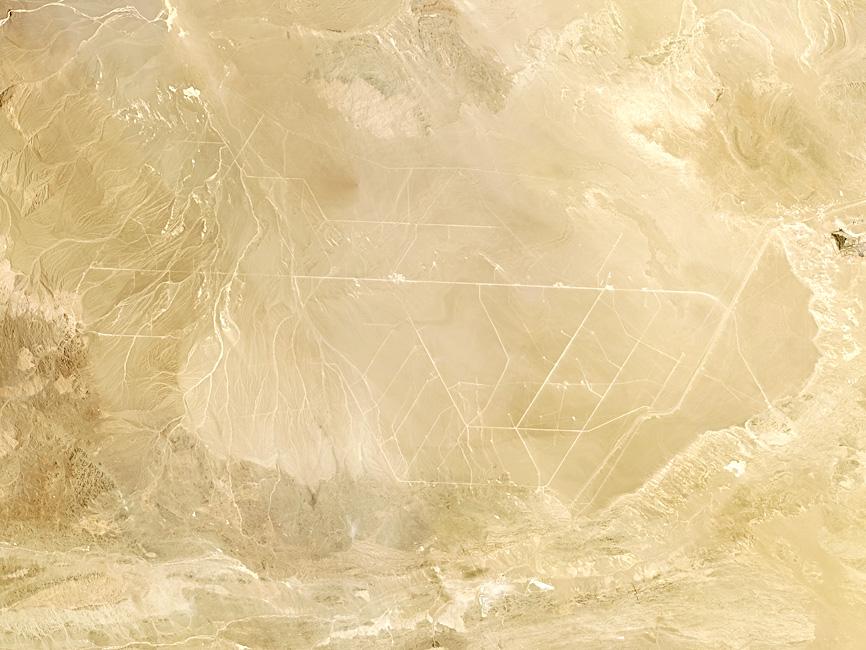China, in the midst of a rapid nuclear weapons buildup, would soon surpass Russia as the US’ top nuclear threat, a senior US military official said on Friday, warning that the two countries have no mechanisms to avert miscommunication.
US Air Force Lieutenant General Thomas Bussiere, the deputy commander of the US Strategic Command, which oversees the country’s nuclear arsenal, said China’s development of nuclear capabilities “can no longer be aligned” with its public claim that it wants to maintain a minimum nuclear deterrent.
“There’s going to be a point, a crossover point, where the number of threats presented by China will exceed the number of threats that currently Russia presents,” Bussiere told an online forum.

Photo: AP
He said the determination would not be based solely on the number of Beijing’s stockpiled nuclear warheads, but also on how they are “operationally fielded.”
“There will be a crossover point, we believe, in the next few years,” Bussiere said.
Unlike with Russia, the US did not have any treaties or dialogue mechanism with China on the issue to “alleviate any misperceptions or confusion,” he added.
Bussiere’s comments come as the US is attempting to realign its foreign policy to put greater emphasis in the Indo-Pacific region to counter China’s growing economic and military might.
US Secretary of State Antony Blinken expressed deep concern about China’s growing nuclear arsenal during a meeting with foreign ministers of Asian countries and partner nations early this month.
Think tank reports based on satellite imagery say China appears to be constructing hundreds of new silos for nuclear missiles, and Washington has accused Beijing of resisting nuclear arms talks.
China has said its arsenal is dwarfed by those of the US and Russia, and that it is ready for dialogue, but only if Washington reduces its nuclear stockpile to China’s level.
In a report last year to the US Congress, the Pentagon estimated China’s operational nuclear warhead stockpile to be in “the low 200s,” and said it was projected to at least double in size as Beijing expands and modernizes its forces.
According to a US Department of State fact sheet, the US had 1,357 nuclear warheads deployed as of March 1.
China’s advances in missile technology to deliver those warheads are also a concern for the US, and Bussiere said China last year tested more ballistic missile capabilities than the rest of the world combined.

‘UNUSUAL EVENT’: The Australian defense minister said that the Chinese navy task group was entitled to be where it was, but Australia would be watching it closely The Australian and New Zealand militaries were monitoring three Chinese warships moving unusually far south along Australia’s east coast on an unknown mission, officials said yesterday. The Australian government a week ago said that the warships had traveled through Southeast Asia and the Coral Sea, and were approaching northeast Australia. Australian Minister for Defence Richard Marles yesterday said that the Chinese ships — the Hengyang naval frigate, the Zunyi cruiser and the Weishanhu replenishment vessel — were “off the east coast of Australia.” Defense officials did not respond to a request for comment on a Financial Times report that the task group from

Asian perspectives of the US have shifted from a country once perceived as a force of “moral legitimacy” to something akin to “a landlord seeking rent,” Singaporean Minister for Defence Ng Eng Hen (黃永宏) said on the sidelines of an international security meeting. Ng said in a round-table discussion at the Munich Security Conference in Germany that assumptions undertaken in the years after the end of World War II have fundamentally changed. One example is that from the time of former US president John F. Kennedy’s inaugural address more than 60 years ago, the image of the US was of a country

BLIND COST CUTTING: A DOGE push to lay off 2,000 energy department workers resulted in hundreds of staff at a nuclear security agency being fired — then ‘unfired’ US President Donald Trump’s administration has halted the firings of hundreds of federal employees who were tasked with working on the nation’s nuclear weapons programs, in an about-face that has left workers confused and experts cautioning that the Department of Government Efficiency’s (DOGE’s) blind cost cutting would put communities at risk. Three US officials who spoke to The Associated Press said up to 350 employees at the National Nuclear Security Administration (NNSA) were abruptly laid off late on Thursday, with some losing access to e-mail before they’d learned they were fired, only to try to enter their offices on Friday morning

CONFIDENT ON DEAL: ‘Ukraine wants a seat at the table, but wouldn’t the people of Ukraine have a say? It’s been a long time since an election, the US president said US President Donald Trump on Tuesday criticized Ukrainian President Volodymyr Zelenskiy and added that he was more confident of a deal to end the war after US-Russia talks. Trump increased pressure on Zelenskiy to hold elections and chided him for complaining about being frozen out of talks in Saudi Arabia. The US president also suggested that he could meet Russian President Vladimir Putin before the end of the month as Washington overhauls its stance toward Russia. “I’m very disappointed, I hear that they’re upset about not having a seat,” Trump told reporters at his Mar-a-Lago resort in Florida when asked about the Ukrainian